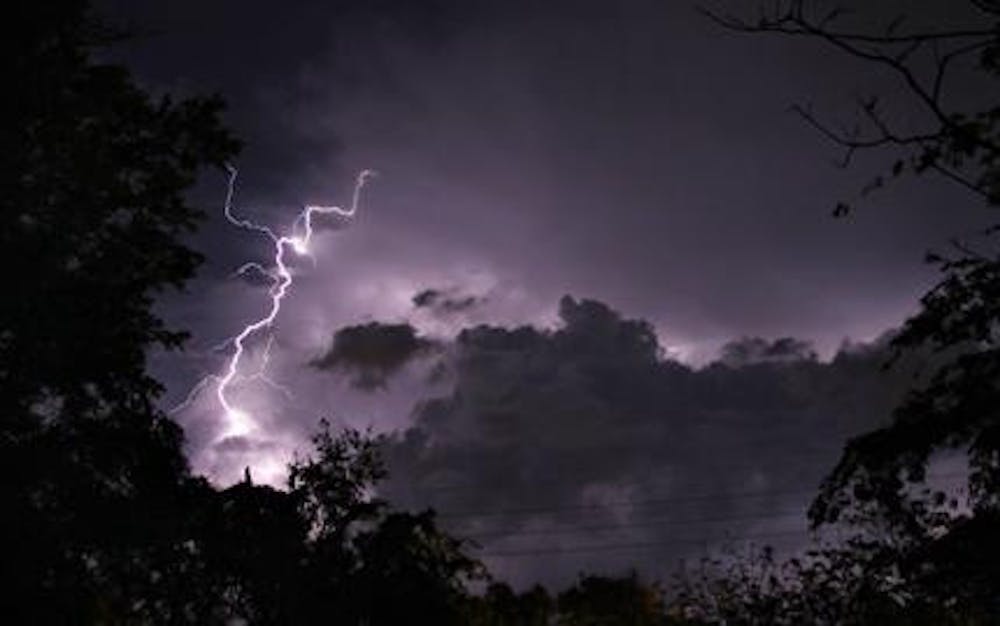Lightning Safety Awareness Week begins Sunday, and with recent thunderstorms drenching the Gainesville area, experts say residents should take note of those electrifying veins that stretch across Florida's summer skies.
Pete Wolf, a meteorologist at the National Weather Service office in Jacksonville, said lightning probably kills more people in Florida than any other weather hazard.
No other state is struck as often, Wolf said.
- In 2008, there have been eight lightning fatalities in the U.S., and the last death was recorded on June 15 in Bristol, Fla.
- Men are struck by lightning four times more often than women. From 1959 to 1994, men account for 84 percent of lightning fatalities and 82 percent of injuries.
- Florida has twice as many lightning casualties (deaths and injuries combined) as any other state.
- Most lightning casualties occur in the afternoon-two-thirds between noon and 4 p.m.
- Sunday has 24 percent more deaths than other days, followed by Wednesday.
- Lightning reports reach their peak in July.
- Information provided by the Science@NASA Web site and the National Weather Service Web site.
Lorraine Williams, an educator at the Alachua County Department of Public Safety, said if people better understand the risk of being struck by lightning, they might avoid being hit like one Gainesville man was last week.
Austin Lowe, 20, who was standing under a tree in Butler Plaza when he was hit by lightning, had the lower half of his body burned.
Lowe was admitted to Shands at UF in serious condition June 10, and was listed in fair condition early Wednesday evening.
Lightning travels at about 37 miles per second and reaches 54,000 degrees Fahrenheit, and it has killed more than 74 people in Florida in the last 10 years, according to data from the National Weather Service.
Lowe is among the majority of people who are injured but not killed by lightning.
Of the 1,500 people hit by lightning in Florida from 1959 to 1994, only 345 died, according to a report by the National Lightning Safety Institute.
Survivors can suffer burn scars, brain damage or injuries to the heart and arteries, said UF meteorology professor Corene Matyas.
"When people are hit, many times their clothing or jewelry will burn and melt into their skin," Matyas said.
Lightning, which harnesses five to six times the heat of the sun and is usually as narrow as a finger, can strike from the bluest sky, she said.
If people are outdoors and hear thunder, they should count to 30.
If they see lightning before that number, they should find shelter immediately, Matyas said.
"If you find yourself in an area with no shelter, crouch as low to the ground, and rest on the balls of your feet," she said. "That way, only a little part of you is touching the ground."






